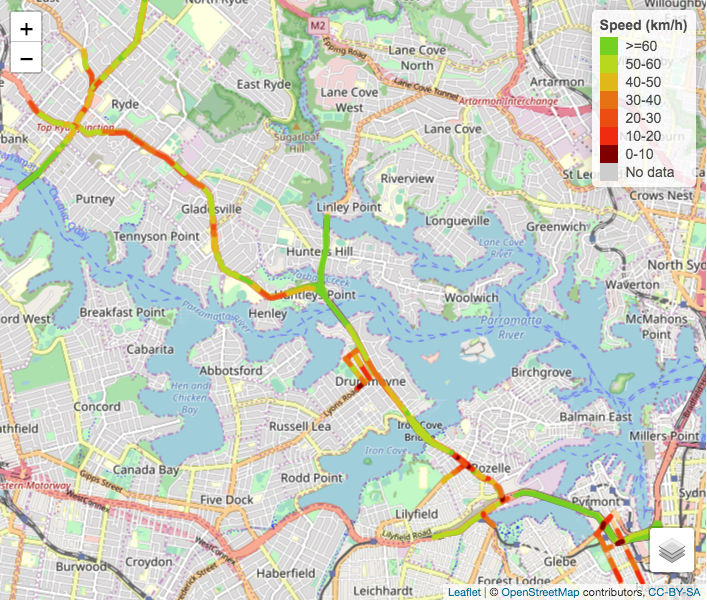The challenge
Targeted and timely tools for transport policy makers
Avoidable social costs of congestion have been projected to rise from over $6 billion in Sydney to more than $12 billion under current policy and population growth conditions. Multiple modes of transport (for instance cars, trains and ferries) are impacted by congestion, and the strain on the transport network as a whole is amplified by incidents and service closures.
Understanding and managing congestion requires multifaceted insights into three key areas.
- The demand for the various transport services: how is demand generated and distributed temporally and spatially?
- Travel behaviour: how are travel decisions influenced by congestion, pricing and public transport accessibility?
- Supply: does the supply of capacity from infrastructure meet demand?
These three components are also closely interconnected, for instance, the impact of incidents on the available infrastructure (supply) will in turn lead to behavioural responses and shifts
Our response
Smarter analysis of transport networks
Under the NSW Premier's Innovation Initiative, Data61 teamed up with Transport for NSW to develop an AI engine for congestion management.
The AI engine complements the existing solutions by integrating machine learning with traffic simulation for short-term transport network prediction. The AI engine is generic and agnostic to transport networks. It ingests transport datasets for the training of special purpose predictive models. The AI engine forms a closed-loop with simulation models to continuously train the AI engine with new situations and responses, and to calibrate the simulation model. Scientific fundamentals of the AI engine have been thoroughly tested using both historical and real-time transport datasets, such as smart card (Opal), GPS, and traffic signal data.
The research for developing the AI engine was recognised by the Intelligent Transport Systems Australia National Research Award (2018), and has been published in leading scientific journals and conferences.

The results
Using AI to manage congestion
This work will contribute to the delivery of the next generation congestion management system for the NSW Transport Management Centre (TMC). In particular, the AI engine enhances the capability to predict two hours into the future and act in five minutes, which is likely to lead to significant improvements in efficiency in managing traffic flows.
The use cases at the TMC include:
- continuous improvement in predictive analytics by using the AI engine to build and train predictive models for changes in networks
- real-time rolling prediction of network demand and speed
- autonomous network anomaly detection and verification
- modelling of multi-modal journeys
- the impact of major network disruptions.
Further expansion of the AI engine may include feedback control of traffic signal systems, variable message signs and smart motorway systems.
The AI engine is scheduled for deployment to the Advanced Data Analytics in Transport (ADAIT) cloud platform by mid-2019. From there the engine will be progressively integrated to the core system and is projected to gain initial operational capability in early 2020.
